How Do You Know When to “Go All In”?
August 09, 2018 | Filed in: Woman of the Week
Author E. Lockhart took a while to find her literary sweet spot. After getting her doctorate in English literature at Columbia, she published several books, but still felt like she hadn’t hit her stride—until she tried her hand at young adult (YA) fiction, and was off to the races. She has since written multiple New York Times bestsellers, and two of her YA novels will soon become films: We Were Liars and Genuine Fraud, the latter of which was scooped up by Lena Dunham and Jenni Konner’s production company, A Casual Romance. We recently paid a visit to Lockhart’s Brooklyn apartment to discuss high school popularity, the importance of taking yourself seriously, and why it’s fun to look a little bit intimidating.
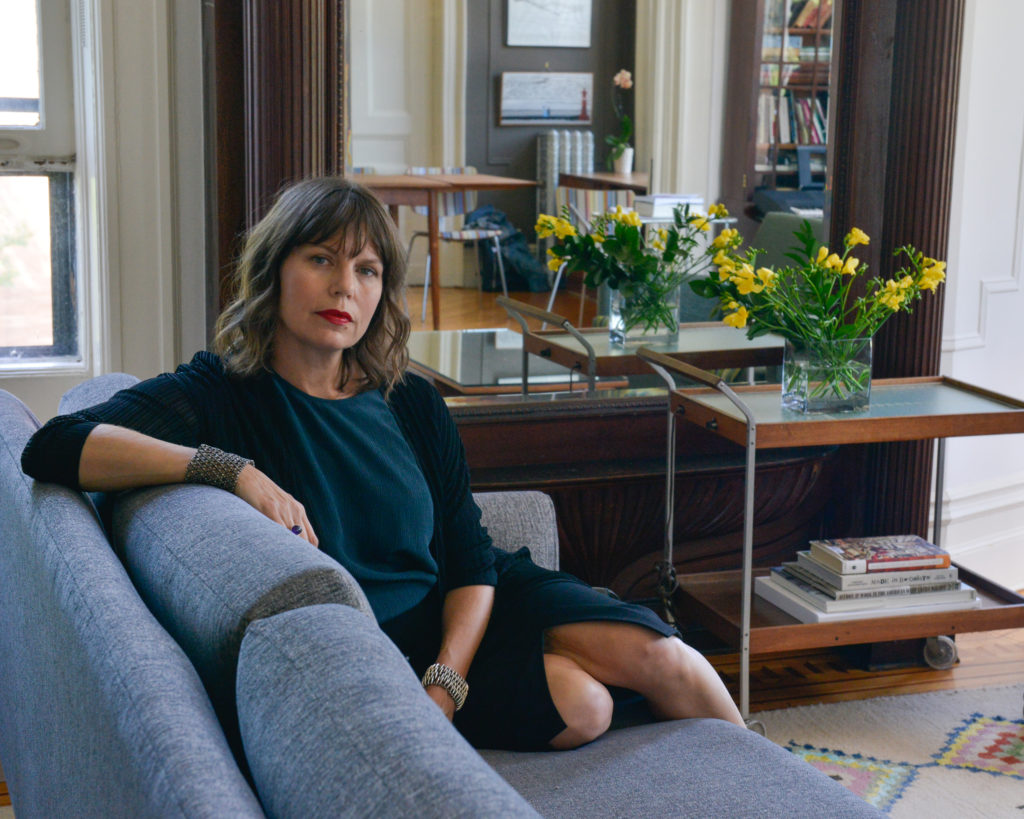
E. Lockhart wears the Greenpoint skirt in black, the Tiffany top in alpine green, and the Graham Kimono in black.
WRITING FICTION IS A WEIRD JOB because you never really know how to go about it. You try new things, and sometimes they work and sometimes they don’t. Whenever I start a new project, I feel like I don’t know how to do my job anymore, and that’s true for many other writers I know. And that’s as it should be. Each project is unique enough that you shouldn’t know how to do it. You figured out the last book, but this one is different.
WHEN I WAS IN COLLEGE, I didn’t have a lot of course requirements, so I took whatever classes I wanted. I also did a lot of partying and extracurricular activities. By the time I graduated, I was finally mature enough to appreciate my education, but it was over—so that’s part of why I went to graduate school. Another reason was that I wanted to take myself more seriously, and by the end of getting a doctorate, I did. Once I realized I could do this hard thing, I didn’t need to do it anymore.

E. Lockhart wears the Tory dress in black and the Single Bezel necklace.
MY GRADUATE EDUCATION was very grounded in literary theory, and I am not particularly theoretically minded. I didn’t enjoy a lot of the work, and it became clear to me that I was going to wrench myself off of that path and pursue a more creative life. After I finished my degree, I was teaching college part-time at three different schools, and also writing for magazines. I published a couple of books that were for a more mainstream audience than my academic work, but I didn’t have any momentum. I also hadn’t found a writing community—people who write for the same audience and can connect with each other.
WHEN I GOT PREGNANT, I wanted to take six months off to be with the baby. My husband and I saved up so that I could do that, and while I was on leave, I wrote a picture book manuscript. My editor rejected it, but she liked one of the characters in it, so she got back in touch with me a while later and said, “Hey, I keep thinking about these characters. Would you want to turn that into a novel?” That novel became the first book I wrote for younger readers, and when it was done, I was very proud of it. And that was when I decided to go all in. I stopped writing for magazines, and I eventually stopped teaching completely. I decided it was time to either make my living writing what I wanted to write, or fail. But juggling two other jobs while trying to be a fiction writer wasn’t working. In a way, having a baby made me prioritize more clearly.
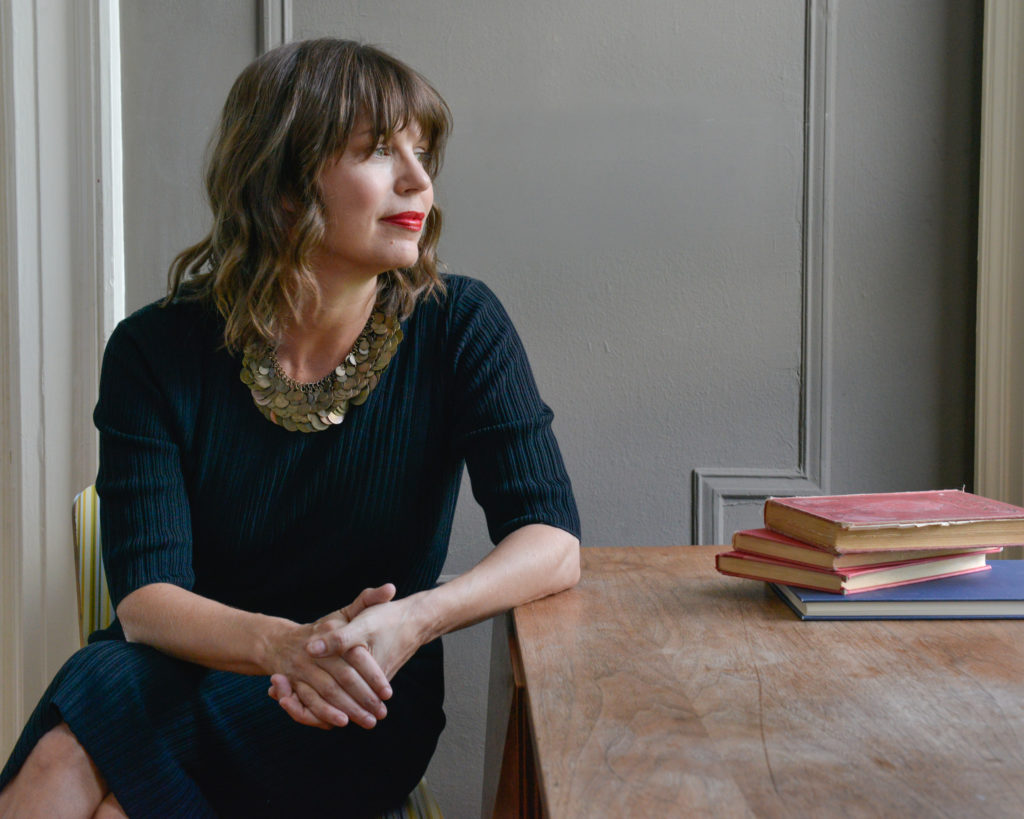
E. Lockhart wears the AJ dress in black and the Square belt in fawn.
SHORTLY AFTER THE BOYFRIEND LIST CAME OUT, I started to connect with other people who were also writing for teenagers. This community is another part of why I stuck with the YA genre, because people who write for young adults have concerns beyond whether their book is successful and finds readers. To be a YA writer is to care about the political issues that affect young people: library access, education issues, sexual health, suicide prevention, LGBTQ+ issues. All of those things tie into the field of young adult literature, and so people in the community are united by activism and celebrating and encouraging young readers.
MANY OF THE ISSUES I’M CONCERNED ABOUT NOW, as an adult human, are explored and reflected in my books. Teenagers are just younger humans. But I also draw on what I remember from my own early life. I went to two high schools: At the first one, I was extremely unpopular, and at the second one, I was very popular. I didn’t make any particular changes to myself between the two. My social status was radically different simply because nobody at the second school knew that I was supposed to be a loser. So that was an interesting experience: I had a view from the top and the bottom of the social hierarchy that exists in so many high schools. That window into both ends of the spectrum has served me well.
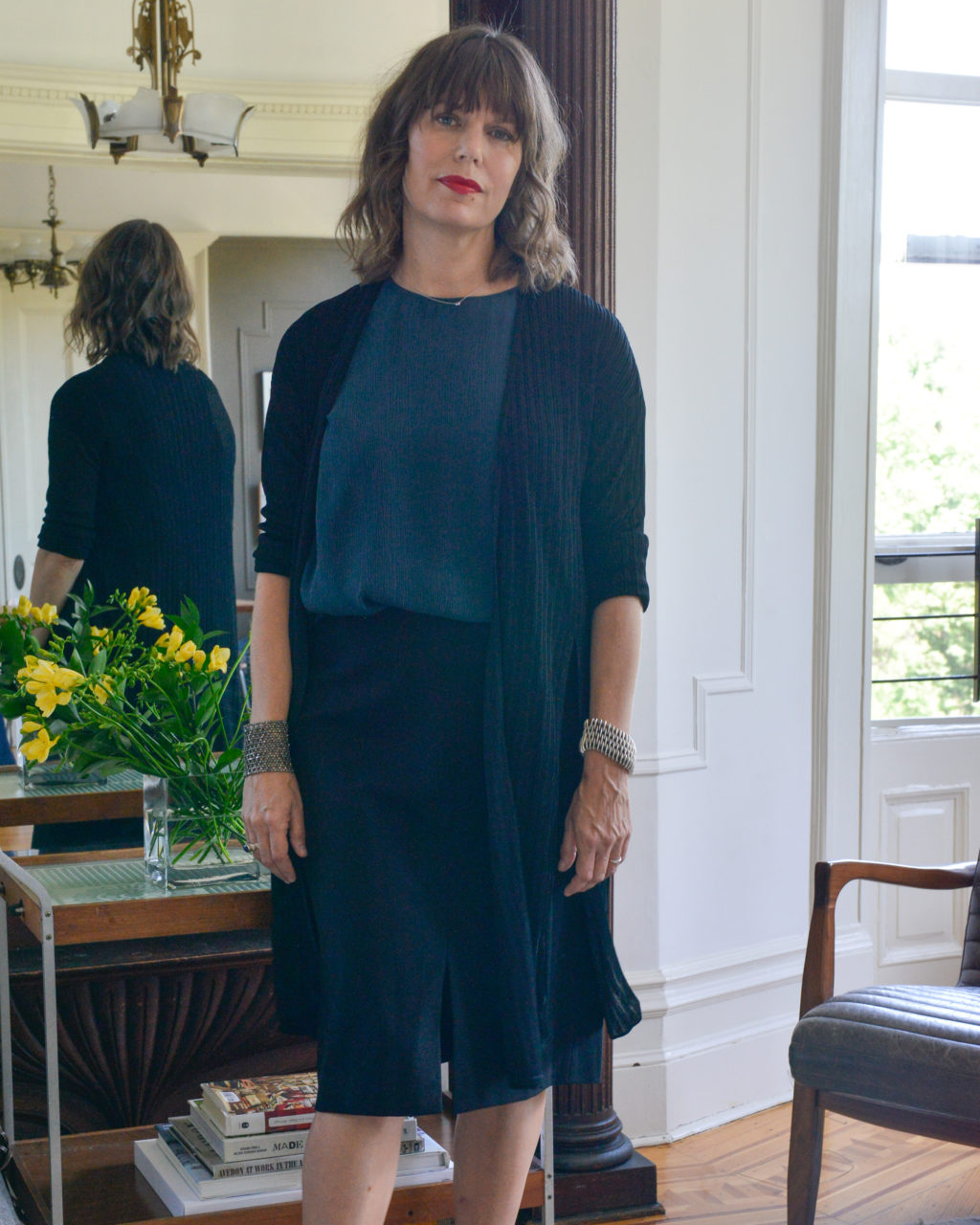
E. Lockhart wears the Greenpoint skirt in black, the Tiffany top in alpine green, the Graham Kimono in black, and the Single Bezel necklace.
MY BOOKS ARE ABOUT YOUNG WOMEN, but that doesn’t mean that they are for young women necessarily. My books are for whoever chooses to pick them up. I also think it’s very worthwhile to shake up the idea that men and boys are not supposed to value the life experiences of young women. As a society, we discourage boys and men from reading about women’s lived experiences, and then they learn not to empathize with them. So I think gender in reading is worth questioning.
I’D SAY THAT ALL OF MY PROTAGONISTS HAVE ONE THING IN COMMON: They are young women whom other people label difficult. I don’t think that young adult literature or children’s literature has an obligation to present role models for youth. If we set out to write fiction with the idea of teaching moral lessons, we are going to be pretty shitty writers. Fiction allows people to empathize across all kinds of potential barriers: religion, gender, class, time and period in history. There’s an element of reading fiction that is inherently moral, in that it creates empathy, and then you begin to look at your own life and your own moral codes. For example, in my book Genuine Fraud, the main character is a terrible person. But I think of it as a very moral book, because in forcing my readers to identify with somebody who commits terrible crimes and yet is sympathetic, the reader is pulled into a kind of moral self-examination. It’s not my job to give them a lesson; it’s my job to tell a good story.
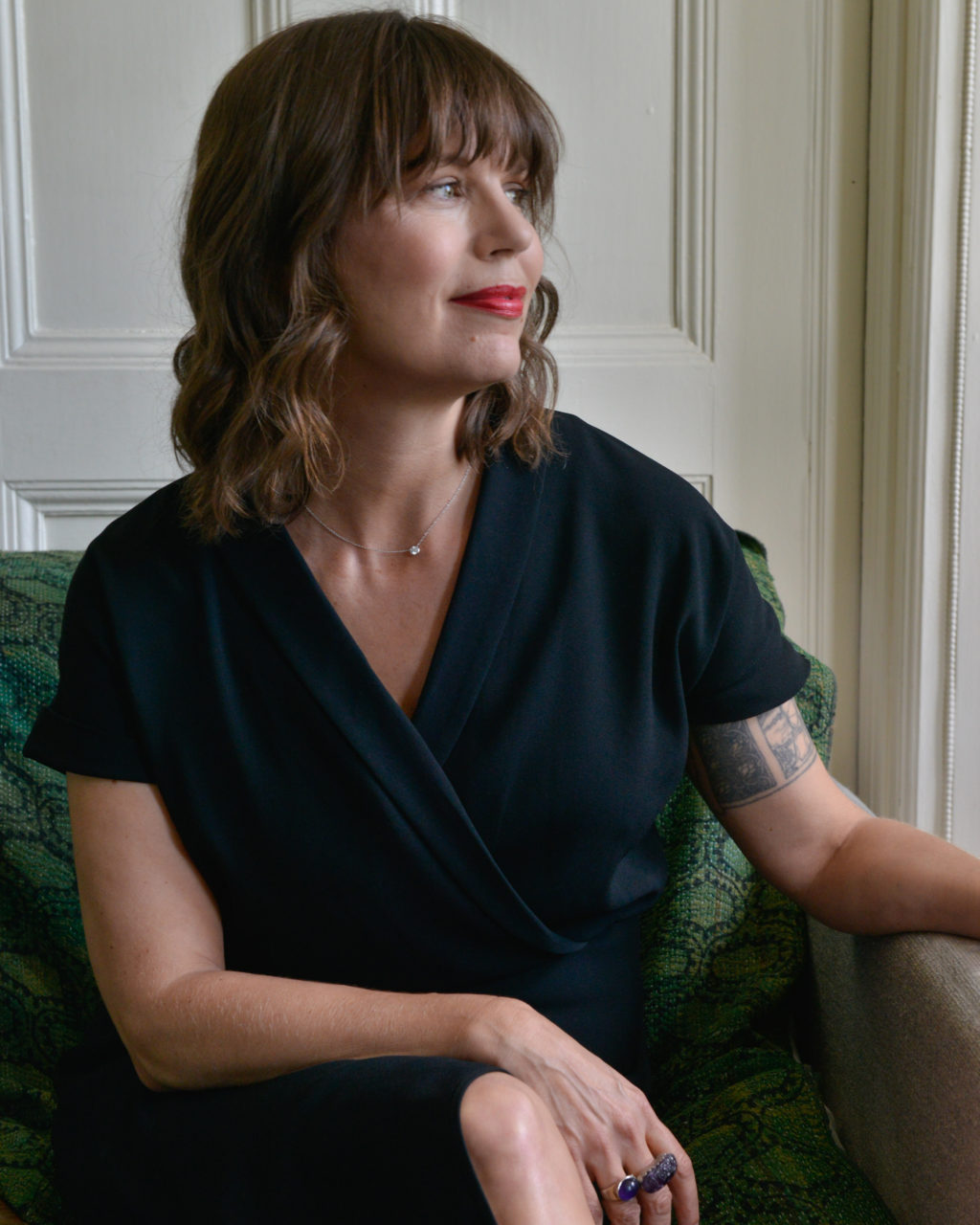
E. Lockhart wears the Tory dress in black and the Single Bezel necklace.
I AM PERHAPS MORE SATISFIED BY THE PROCESS OF MAKING SOMETHING I wanted to make than I am by its reception. Some books are successful, some books are not. I can’t have my sense of self-worth constantly riding a rollercoaster based on that. There will always be terrible reviews of things that you write. You can’t search them out and hold onto them and walk around with them in your heart. It won’t help you grow you as a human or as a creator.
IT TAKES ME ABOUT TWO YEARS TO WRITE A YA BOOK. I begin by sitting my ass in a chair and typing stuff. I make various notes and do a certain amount of prep before I begin to write. The process is different from book to book. And I usually have another project on the back burner as well, which is useful for the way that my brain functions: I can work on something for three hours, and then I get a little antsy and I want to shake it up, so I’ll work on something else.
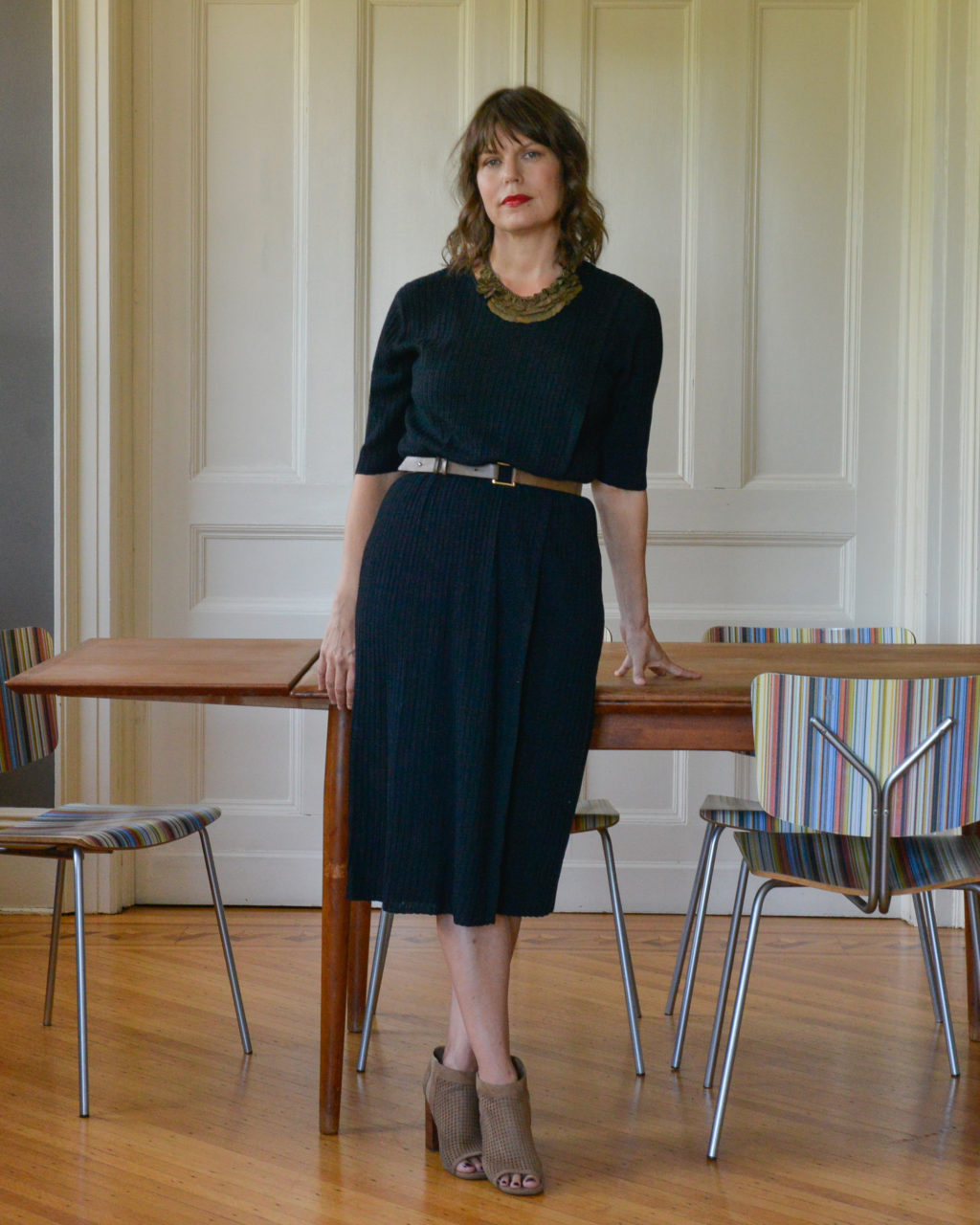
E. Lockhart wears the AJ dress in black and the Square belt in fawn.
I CAN’T AFFORD TO HAVE WRITING RITUALS because that would give me excuses to not work if I didn’t have my rituals in place. So I get up in the morning, do family stuff, get some exercise, write for four hours or so, and then take a break. In the afternoons, I usually do administrative or easier work. I also travel a lot for my job, which is one of the reasons why I like MM.LaFleur’s clothes—they pack well. I go to book festivals and conferences and speaking engagements at schools. Especially after my book We Were Liars became successful, traveling has become a big part of my life. I have to write on planes and trains and in hotel rooms. I can’t be precious about it.
I LIKE TO DRESS UP WHEN I’M GOING TO AN EVENT. It shows that I’m excited to be there, whether it’s a library conference or bookstore, and I think that’s important. But it’s also fun. I take the public aspect of being a writer as an opportunity to enjoy fashion. I tend to wear clothes that are a little bit severe; I also wear red lipstick, which seems to make people think you’re the boss. People are often a little frightened of me, which I sort of enjoy. I’m not necessarily trying to make people afraid, but I don’t mind it. I think it means I look authoritative.
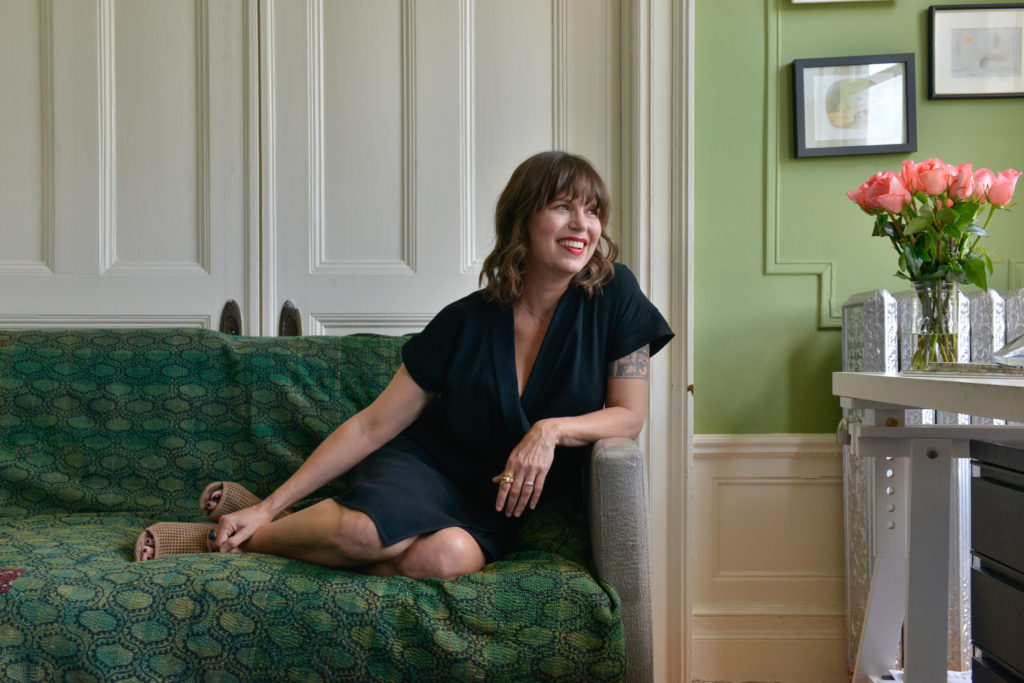
E. Lockhart wears the Tory dress in black and the Single Bezel necklace.
Photographs by Jessica Todd Harper.





